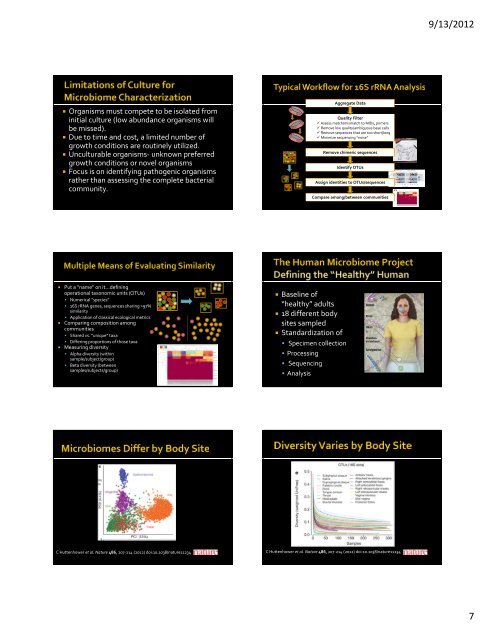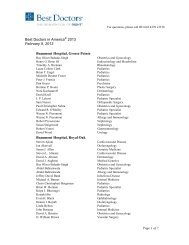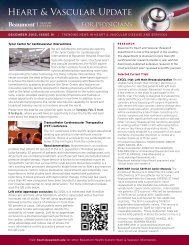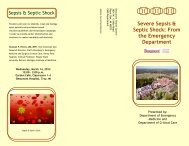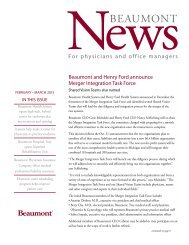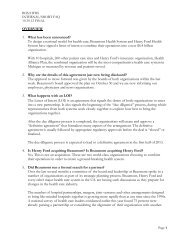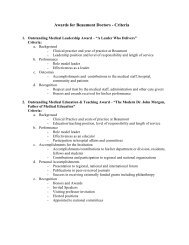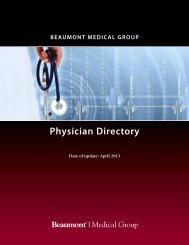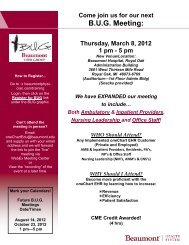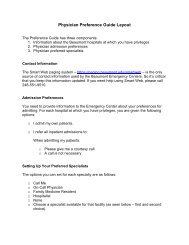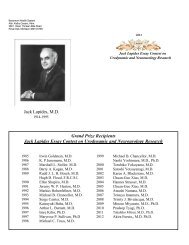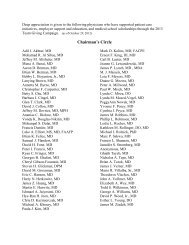Bacterial Identification Single Pathogen Identification by 16S rRNA ...
Bacterial Identification Single Pathogen Identification by 16S rRNA ...
Bacterial Identification Single Pathogen Identification by 16S rRNA ...
You also want an ePaper? Increase the reach of your titles
YUMPU automatically turns print PDFs into web optimized ePapers that Google loves.
9/13/2012• Organisms must compete to be isolated frominitial culture (low abundance organisms willbe missed).• Due to time and cost, a limited number ofgrowth conditions are routinely utilized.• Unculturable organisms‐ unknown preferredgrowth conditions or novel organisms• Focus is on identifying pathogenic organismsrather than assessing the complete bacterialcommunity.Aggregate DataQuality Filter Assess match/mismatch to MIDs, primers Remove low quality/ambiguous base calls Remove sequences that are too short/long Minimize sequencing “noise”Remove chimeric sequencesIdentify OTUsAssign identities to OTUs/sequencesCompare among/between communities• Put a “name” on it…definingoperational taxonomic units (OTUs)• Numerical “species”• <strong>16S</strong> <strong>rRNA</strong> genes, sequences sharing >97%similarity• Application of classical ecological metrics• Comparing composition amongcommunities• Shared vs. “unique” taxa• Differing proportions of those taxa• Measuring diversity• Alpha diversity (withinsample/subject/group)• Beta diversity (betweensamples/subjects/group)• Baseline of“healthy” adults• 18 different bodysites sampled• Standardization of• Specimen collection• Processing• Sequencing• AnalysisC Huttenhower et al. Nature 486, 207‐214 (2012) doi:10.1038/nature11234C Huttenhower et al. Nature 486, 207‐214 (2012) doi:10.1038/nature112347


